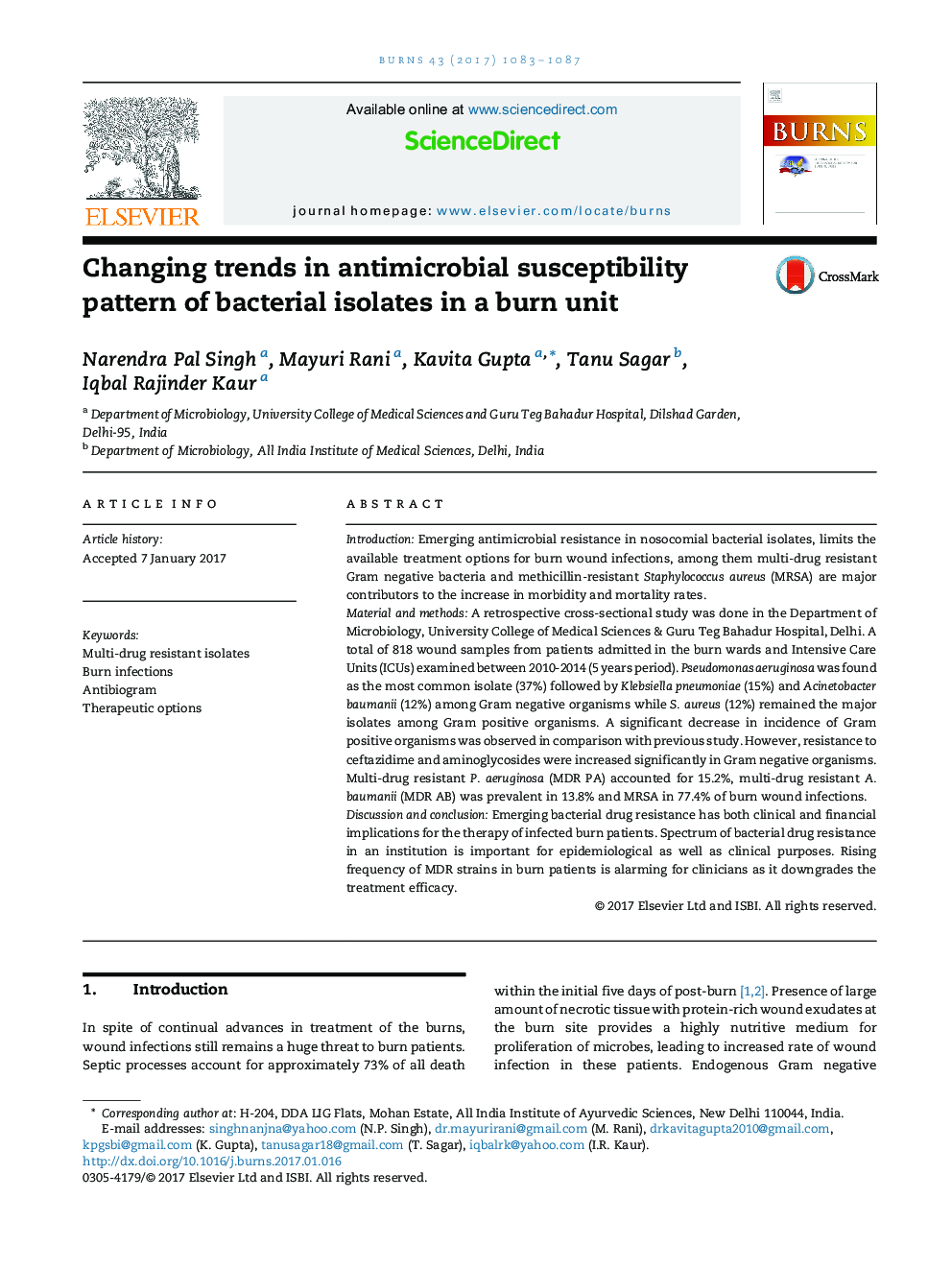| کد مقاله | کد نشریه | سال انتشار | مقاله انگلیسی | نسخه تمام متن |
|---|---|---|---|---|
| 5636163 | 1406663 | 2017 | 5 صفحه PDF | دانلود رایگان |
- The bacteriological profile and antibiogram pattern vary with time.
- A significant decrease in incidence of Staphylococcus sp. was observed.
- Increase in resistance was observed among gram negative organism.
- Emergence of multi-drug resistant stains was seen.
- Increasing drug resistance is alarming for clinicians.
IntroductionEmerging antimicrobial resistance in nosocomial bacterial isolates, limits the available treatment options for burn wound infections, among them multi-drug resistant Gram negative bacteria and methicillin-resistant Staphylococcus aureus (MRSA) are major contributors to the increase in morbidity and mortality rates.Material and methodsA retrospective cross-sectional study was done in the Department of Microbiology, University College of Medical Sciences & Guru Teg Bahadur Hospital, Delhi. A total of 818 wound samples from patients admitted in the burn wards and Intensive Care Units (ICUs) examined between 2010-2014 (5 years period). Pseudomonas aeruginosa was found as the most common isolate (37%) followed by Klebsiella pneumoniae (15%) and Acinetobacter baumanii (12%) among Gram negative organisms while S. aureus (12%) remained the major isolates among Gram positive organisms. A significant decrease in incidence of Gram positive organisms was observed in comparison with previous study. However, resistance to ceftazidime and aminoglycosides were increased significantly in Gram negative organisms. Multi-drug resistant P. aeruginosa (MDR PA) accounted for 15.2%, multi-drug resistant A. baumanii (MDR AB) was prevalent in 13.8% and MRSA in 77.4% of burn wound infections.Discussion and conclusionEmerging bacterial drug resistance has both clinical and financial implications for the therapy of infected burn patients. Spectrum of bacterial drug resistance in an institution is important for epidemiological as well as clinical purposes. Rising frequency of MDR strains in burn patients is alarming for clinicians as it downgrades the treatment efficacy.
Journal: Burns - Volume 43, Issue 5, August 2017, Pages 1083-1087
